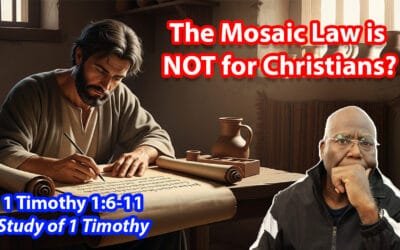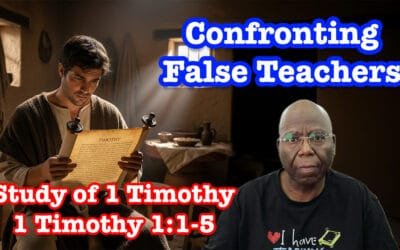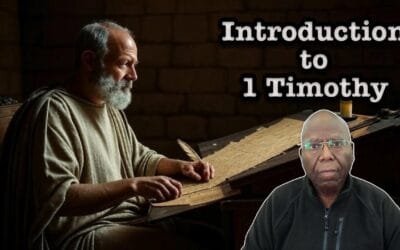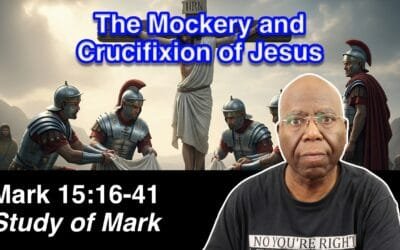Sign up for your free membership to
get access to member-only content.
Praying for Leaders; Role of Men [in the Church] (1 Timothy 2:1-8)
In 1 Timothy 2:1-8, Paul commands prayers for all people, especially rulers, to promote peace and godliness. This reflects God’s desire for all to be saved through Christ, the one mediator. Paul affirms his role as a teacher of the Gentiles and urges men to lead in holy, peaceful prayer.
Persistent False Teachers Are Handed Over To Satan? (1 Timothy 1:12-20)
In 1 Timothy 1:12-20 Paul thanks Christ for appointing him to ministry despite his past as a blasphemer, showing that he received mercy and grace. Calling himself the foremost sinner, he highlights God’s patience as an example to others. He praises God and charges Timothy to remain faithful, warning him with the example of Hymenaeus and Alexander, who were disciplined for rejecting the faith.
The Mosaic Law Is Not for Christians? (1 Timothy 1:6-11)
1 Timothy 1:6–11 warns against those who have turned from sound teaching to fruitless discussion, desiring to be teachers of the Law without understanding it. Paul clarifies that the Law is not for the righteous but for the lawless and sinful, listing specific moral violations. He concludes that the proper use of the Law aligns with the gospel he was entrusted to proclaim.
Did Jesus Insult the Canaanite Woman?
A closer look at Matthew 15:21-28 (Mark 7:24-30)
Confronting False Teachers (1 Timothy 1:1-5)
1 Timothy 1:1–5 opens with Paul’s greeting to Timothy, affirming his apostolic authority by the command of God and Christ Jesus. He urges Timothy to remain in Ephesus to confront false teachers promoting myths and speculations rather than God’s redemptive plan. Paul emphasizes the goal of his instruction: love that flows from a pure heart, a good conscience, and sincere faith—highlighting the pastoral and ethical aim of sound doctrine.
Introduction to 1 Timothy
Introduction of Paul’s first epistle to Timothy
Why I prefer the New American Standard Bible
Why I prefer the New American Standard Bible 1995 Updated Edition
The Mockery and Crucifixion of Jesus (Mark 15:16-41)
Mark 15:16–41 recounts Jesus’ mockery, crucifixion, and death. Roman soldiers humiliate Him, He is crucified at Golgotha, darkness covers the land, and Jesus dies with a loud cry. The temple veil tears, and a centurion declares, “Truly this man was the Son of God.” Women followers witness from a distance.
Jesus Condemned by Pilate! (Mark 15:1-15)
In Mark 15:1–15, Jesus is brought before Pilate by the chief priests. Though Pilate finds no guilt in Him, the crowd—stirred by the leaders—demands the release of Barabbas instead. Yielding to political pressure and to satisfy the crowd, Pilate condemns Jesus to be crucified.
Jesus is Condemned By the Religious Leaders; Peter’s Denial (Mark 14:53-72)
In Mark 14:53-72, Jesus is brought before the high priest and falsely accused, while Peter follows at a distance and denies Him three times, fulfilling Jesus’ prophecy as the rooster crows.
Jesus’s Betrayal, Arrest and Abandonment (Mark 14:43-52)
In Mark 14:43–52, Judas betrays Jesus with a kiss, leading a crowd armed with swords and clubs to arrest Him. Jesus confronts them about their secrecy. The disciples flee, and a young man escapes naked, highlighting the complete abandonment of Jesus.
Jesus’s Struggle in Gethsemane (Mark 14:27-42)
In Mark 14:12–26, Jesus predicts the disciples’ desertion and Peter’s denial, then prays in Gethsemane in deep agony while the disciples repeatedly fall asleep; He submits to the Father’s will as His betrayal approaches.

![Praying for Leaders; Role of Men [in the Church] (1 Timothy 2:1-8)](https://letstalkscripture.org/wp-content/uploads/2025/07/thumbnail-400x250.jpg)










